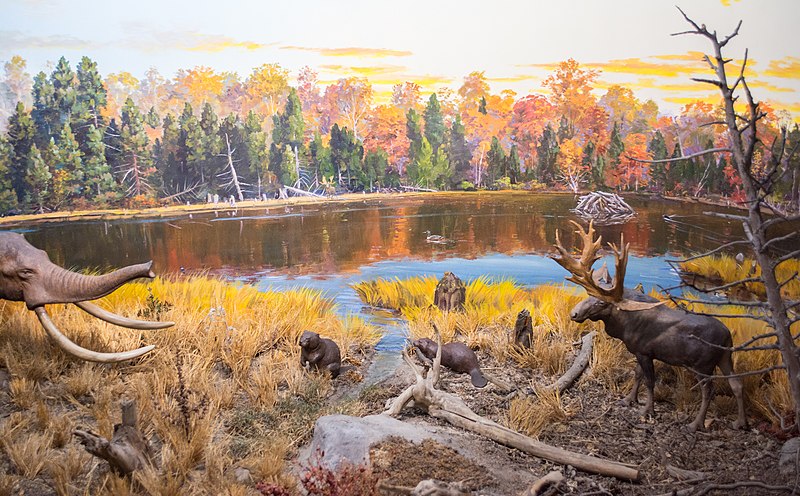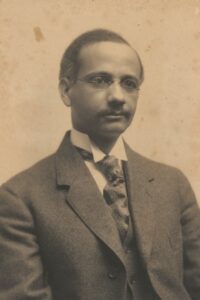
This essay is part of a new Westborough History Connections series called, “A Meeting of Two Cultures: Native Americans and Early European Settlers in Westborough.” Click here to start at the beginning of the series.
Hunter-Gathering, the End of the Ice Age, and the Nipmucs
You most likely have seen at least one reality television show where people are dumped in the middle of the wilderness and then try to survive for a period of time. Survivor, my personal favorite, has been on T.V. the longest, but others include Alone, Man vs. Wild (and other shows starring Bear Grylls), and the embarrassing Naked and Afraid, where strangers are paired up and have to battle the elements without wearing any clothing. Most people on these shows do not last more than a few weeks in such conditions, even if they are wearing clothes.
This survival genre first began with Daniel Defoe’s Robinson Crusoe (1719), an early novel that tells the story of a man who finds himself shipwrecked alone on an uninhabited island and slowly builds the rudimentary foundations of civil society. All of these narratives highlight the struggle of the protagonists in their fight against nature and in doing so valorize the more comfortable lifestyle that modern life affords us. While we watch or read, we believe that we are gaining insight into what it must have been like to be a hunter-gatherer, where starvation is a constant threat, and we thank our lucky stars that we do not have to live that way.
Except that this characterization of what it must be like to live as hunter-gatherers is entirely false and misleading.
The narratives I cite above all tend to focus on what hunter-gatherers lack, as opposed to what they have or had. One key element that is missing is a functional society where people work together to provide food, shelter, and other necessities for the group as a whole. Another is hundreds, if not thousands, of years of knowledge—knowledge gained through careful observation, experimentation, and ingenuity—about how the environment around them works and how it can best support subsistence. Yet another missing element are the sets of behaviors and belief systems that reinforce this knowledge about the environment and facilitate its passing down to future generations.
* * *
Starting around 8,000 BC, the giant mammals that inhabited North America during the Ice Age—which included mammoths, mastodons, ground sloths, and giant beavers—began to die out. For many hundreds of years, indigenous people had been hunting these huge food sources using a combination of spears and fire. Some scientists say that environmental changes taking place not only led to the melting of the massive glaciers that covered much of the continent but also resulted in the extinction of over three dozen species of these giant animals. People kept hunting these animals throughout this period—with evidence of overhunting and leaving whole carcasses to rot—so other scientists say that humans caused the extinction, if not helped bring the process to a faster conclusion. Even though the warming of the climate was potentially catastrophic to these animals, it also led to diversification both of the natural environment and, consequently, of the diets of Native Americans going forward.
After having lived on the land for over 10,000 years, Native Americans living just before European contact were aware of almost every detail and facet of their environment. Much like today, they sought ways to utilize the entire landscape available to them to support their existence—the difference being that our present economic system is geared towards a single endpoint, i.e., money, whereas theirs was focused on long-term subsistence.
If you are a hunter and gatherer, the best strategy is to seek out diversified food sources; that way, if one resource falls short one year, a greater supply of another resource can offset the impact of the other. Such a strategy means moving around the landscape to locations where resources are readily available at different times of the year. (People with a more sedentary lifestyle tend to specialize in a narrower range of food resources, and so they require different technologies both to grow their food sources and to bring resources that they do not have in their immediate surroundings to them.)
The Nipmuc, or “fresh water people,” were hunter-gatherers who inhabited the interior of Massachusetts (including Westborough), as well as parts of Rhode Island and Connecticut. They lived in scattered villages in wetus, structures that could easily be moved to other encampments when the cycle of the season demanded it. When we talk about Native American history today, we tend to focus on tribes and confederacies, but these villages—which were tied together by kinship ties, trade alliances, and common enemies—formed the true centers of activity and interaction with the environment. Unlike villages today, these villages were not geographically fixed and were continually moved to places where the Nipmuc believed they could find the greatest number of natural food supplies.
* * *
I began this essay discussing the misnomers that we normally hold about the life of hunter-gatherers and how they are perpetuated in reality shows and other narratives involving “primal” survival scenarios. But there is one misnomer that I have not yet covered. All of these narratives involve intense struggle, starvation, and seemingly endless amounts of work. But numerous anthropological studies of the lifestyles of hunter-gatherers show that they enjoy far more leisure time, more diverse diets, and in many ways a more comfortable existence than what we in Western society do. We pay a heavy cost to support our more sedentary lifestyle, which today includes long work hours, heavy commutes, and a more isolated existence. We will explore this facet of Native American life a bit more in the next newsletter, when we take a closer look at village life of the Nipmucs.
—Anthony Vaver, Local History Librarian
Works Consulted:
- Robinson Crusoe by Daniel Defoe.
- “Borders and Borderlands” by Juliana Barr, in Why You Can’t Teach United States History without American Indians, ed. Susan Sleeper-Smith, et. al.
- Wild New World: The Epic Story of Animals and People in America by Dan Flores.
- Indigenous Continent: The Epic Contest for North America by Pekka Hämäläinen.
- People of the Fresh Water Lake: A Prehistory of Westborough, Massachusetts by Curtiss R. Hoffman.
- “A Brief Look at Nipmuc History” by Cheryll Toney Holley, in Dawnland Voices: An Anthology of Indigenous Writing from New England, ed. Siobhan Senier.
- Changes in the Land: Indians, Colonists, and the Ecology of New England by William Cronon.
Special Note: To learn more about about Westborough’s pre-history (and the importance of Cedar Swamp), watch the second part of R. Chris Noonan and Luanne Crosby’s Architectural/Cultural Walking Tour #2: Archaeological Primer; Westborough’s Pre-History.
Click here to go to the next essay in the series, “A Meeting of Two Cultures: Native Americans and Early European Settlers in Westborough”
* * *

Who Was Dr. Solomon Carter Fuller?
On Monday, February 6, 2023 at 7 p.m., the Westborough Historical Society will celebrate Black History Month with a program titled, “Who Was Dr. Solomon Carter Fuller?” As the first Black psychiatrist in the U.S., Fuller worked at the Westborough State Hospital from 1899 to 1933 where he did ground-breaking research in Alzheimer’s Disease and other mental diseases. This program will be presented by Dr. Edith Jolin of the Boston University School of Medicine.
This Historical Society program is free on Zoom. Click here to register for the program in advance: https://us02web.zoom.us/meeting/register/tZAkceqqqTsuG9EvyPX-N5iEVm3X0orI06Wy.
* * *

Check Out the Photography of Nancy Engberg
You probably recognize Nancy Engberg. She was a member of the library staff for 26 years before she retired in October of 2022. But did you know that she is also an accomplished photographer?
Visit the Westborough Public Library to see a collection of photographs Nancy has taken over the years. Together they demonstrate her innovative experimentation with photography, including her use of infrared photography, pinhole cameras, oil paint on printed works, and even toy cameras. She produced all of her photographs in her own darkroom. This exhibit will be displayed on the main floor of the library over the next two months, so make sure to stop by to see it.
* * *

Learn About Five Famous Women of Westborough
After checking out the photography of Nancy Engberg, take a look at the display case outside of the Westborough Center and learn about five famous women, a display inspired by Kristina Nilson Allen’s recent talk on this topic for the Westborough Historical Society. You can also learn more about these women in Allen’s online exhibit, Famous Women of Westborough Across the Centuries, which includes a link to a recording of her talk.
* * *
Did you enjoy reading this Westborough Center Pastimes newsletter? Then subscribe by e-mail and have the newsletter and other notices from the Westborough Center for History and Culture at the Westborough Public Library delivered directly to your e-mail inbox.
You can also read the current and past issues on the Web by clicking here.